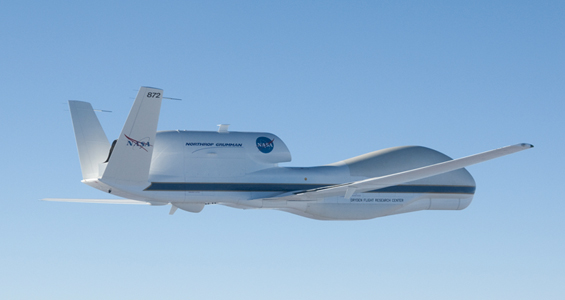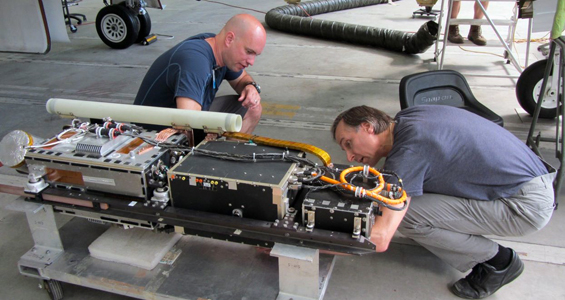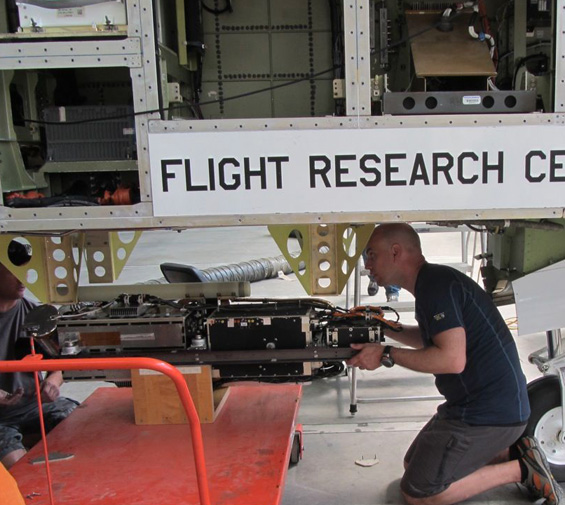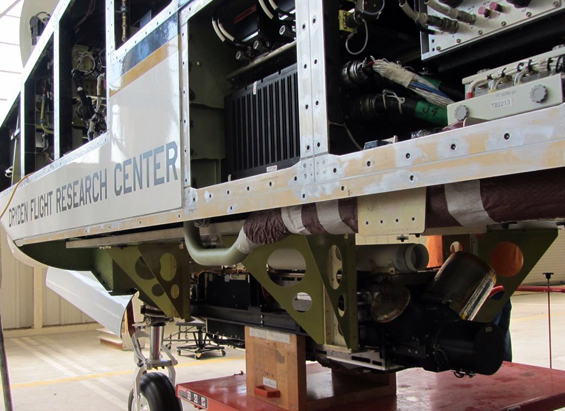Prepping the Drone
Hurricanes – huge, powerful, potentially incredibly destructive – roar to life every year in the Atlantic Ocean and threaten coastlines from South America to Maine. The sheer size of the storms, the winds they generate, and their massive precipitation are bad enough, but they are also largely unpredictable. What path will a particular storm take? How can we better understand the intensity changes in the storm that are so important in preparing for its onslaught?
Global Hawk Unmanned Aircraft Systems provide an ideal platform for studying the inner workings of hurricanes. The drones can fly at altitudes between 55,000 and 65,000 feet, with flights lasting 24 hours each. HS3 will utilize two Global Hawks, one with an instrument suite geared toward measurement of the environment surrounding the storm and the other with instruments suited to inner-core structure and processes.
SSEC’s Scanning High-Resolution Interferometer Sounder (S-HIS) is going to lead the way in that quest, riding into the hearts of hurricanes on an unmanned drone as part of NASA’s Hurricane and Severe Storm Sentinel (HS3) mission. The S-HIS instrument will capture high spectral resolution infrared data and measure both cloud radiative properties and sea-surface/land temperatures.
SSEC research engineers and technicians recently completed the process of integrating the S-HIS to its Global Hawk aircraft platform at the Dryden Flight Research Center at Edwards Air Force Base in California.
“Our integration consisted of three primary interfaces: mechanical, electrical, and communications,” says SSEC Research Engineer Joe Taylor. “We needed to ensure that the instrument was installed properly and then verify each of these interfaces. Integration was the final step in a very exhaustive design process in which the instrument’s compatibility with the aircraft was analyzed.”
Mechanical integration consisted primarily of mounting the instrument on the aircraft, verifying the instrument’s mass and center of gravity, and the aircraft’s mass and balance with all instruments installed. The Global Hawk’s electrical system was also tested to insure compatibility prior to connecting the S-HIS to aircraft power.
“The Global Hawk is more advanced than other aircraft in terms of communications,” Taylor says. “It has an aircraft network that allows direct communication with the instrument from the ground station via KU band satellite communication. For the comm portion of integration we needed to verify that this link was working correctly, both at the aircraft network level and up the complete communication chain of instrument to aircraft to ground via KU satellite.”
With the installation and integration of S-HIS complete, the aircraft will transit from California to the Wallops Flight Facility in Virginia on 29 August. Global Hawk flights into hurricanes will commence on 01 September and last through 05 October this hurricane season.




